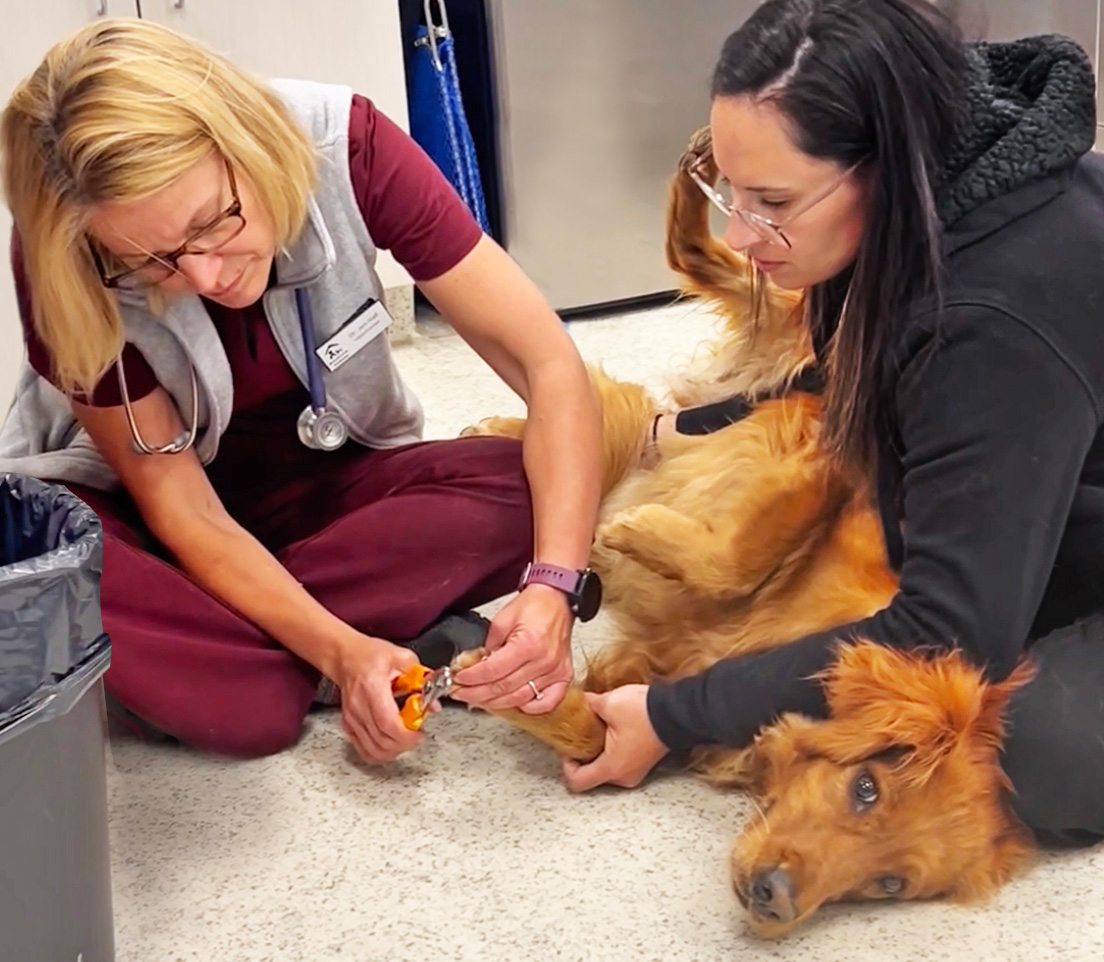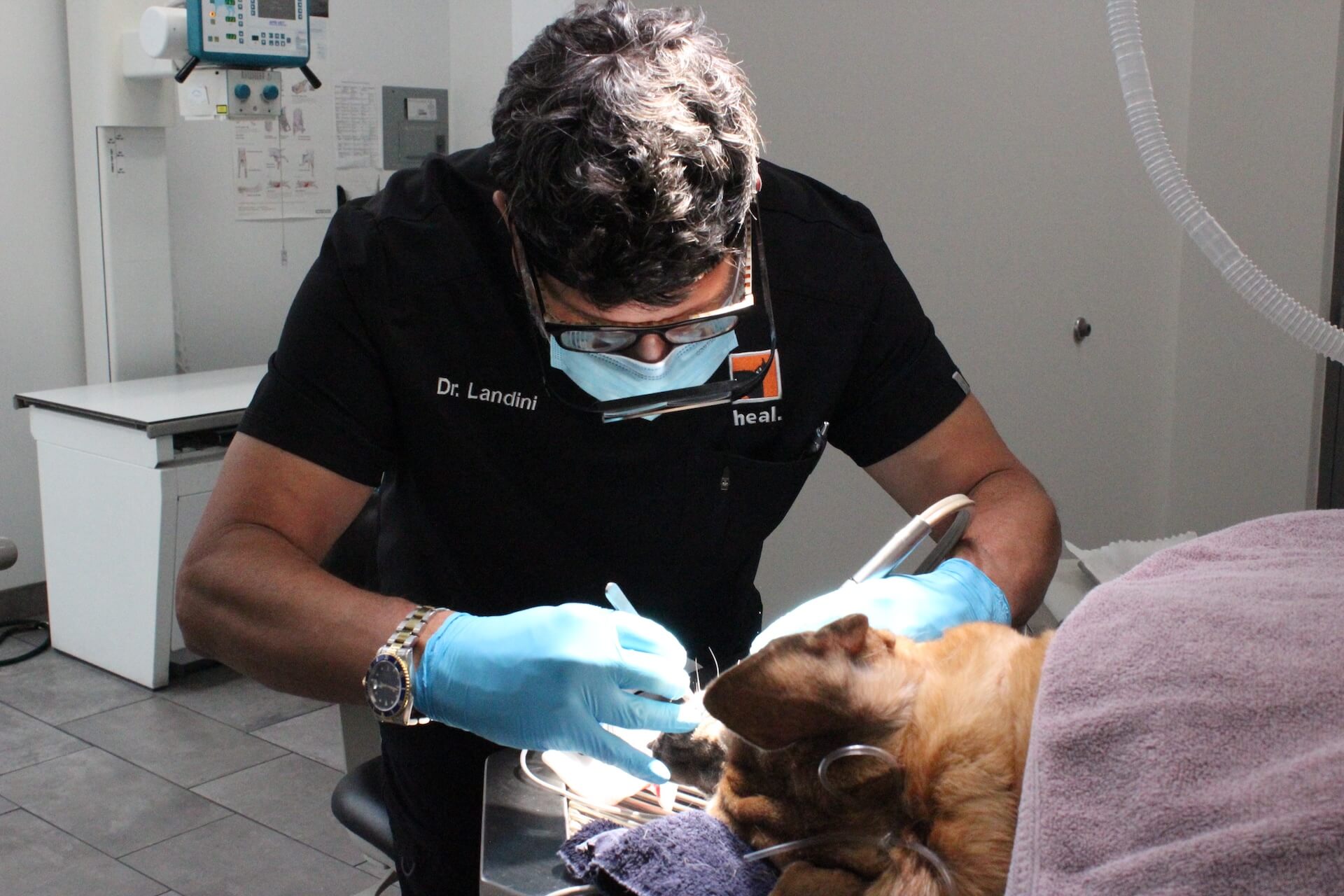Comparing Local Clinics to Find the Best emergency vet near me
Comparing Local Clinics to Find the Best emergency vet near me
Blog Article
Everything About Vet Surgery: Recognizing the Relevance of Expert Look After Your Pets
Veterinary surgical procedure is a vital component of family pet healthcare. It incorporates numerous procedures, from routine elective surgeries to immediate interventions. Recognizing the details of these surgical procedures can help pet owners make notified choices. The prep work, implementation, and healing stages are vital for guaranteeing the well-being of pets. With appropriate understanding, owners can browse the intricacies of vet care. What variables should be taken into consideration before an animal goes through surgical procedure?
Sorts Of Veterinarian Surgeries
When a pet dog needs surgical intervention, comprehending the different sorts of vet surgical procedures can aid animal owners make informed decisions. Veterinary surgical procedures can be broadly categorized right into three primary kinds: optional, immediate, and emergency surgeries. Optional surgical treatments, such as spaying or neutering, are intended treatments that are not immediately deadly. Urgent surgical procedures, like those for foreign body elimination, should be executed quickly however are not deadly in the minute. Emergency situation surgical treatments, such as those dealing with severe injury or interior bleeding, are crucial and need prompt attention.Additionally, surgical procedures can differ in intricacy, ranging from minimally invasive laparoscopic procedures to a lot more extensive open surgeries. Each sort of surgery brings its very own threats and healing procedures. Understanding these categories enables pet owners to take part in meaningful conversations with veterinarians, causing far better outcomes for their cherished pet dogs.
Planning for Your Animal's Surgical treatment
Planning for an animal's surgical treatment entails a detailed list to ensure all essentials are covered. Efficient interaction with the veterinarian is essential for comprehending the treatment and any kind of required pre-operative actions - animal emergency care bellingham. In addition, having clear post-operative care directions will certainly assist owners give the most effective support for their recovering animals
Pre-Surgery Checklist Basics
Ensuring a smooth surgical experience for an animal needs cautious prep work and interest to information. A pre-surgery list is vital for pet owners to follow. Validating the arranged surgical procedure day and time is essential. Owners ought to additionally confirm that their pet dog has actually fasted according to the vet's directions, generally for 8-12 hours prior to surgical treatment. Collecting necessary clinical documents, including inoculation background, is vital for the veterinarian's testimonial. It is likewise recommended to prepare a comfortable area in your home for the pet dog's healing after surgical procedure. Finally, owners ought to have a prepare for transport to and from the veterinary clinic, ensuring that the pet dog is safe and secure and comfy throughout the journey. Following these actions can considerably improve the surgical experience.
Interacting With Your Veterinarian

Efficient interaction with the veterinarian is important for an effective medical experience for animals. Owners need to be prepared to review their animal's clinical history, consisting of any kind of pre-existing problems, medications, and allergic reactions. This info assists the veterinarian analyze dangers and tailor the medical plan as necessary. Additionally, family pet proprietors ought to ask inquiries pertaining to the procedure, anesthesia, and anticipated results to guarantee they completely recognize the process. Making clear any type of questions can reduce anxiousness for both the animal and the proprietor. It is also crucial to interact any type of behavioral changes or concerns observed in the family pet leading up to the surgical procedure. Ultimately, clear discussion fosters count on and partnership, ensuring that family pets receive the finest feasible care throughout their medical journey.
Post-Operative Treatment Directions
After discussing the procedure with the veterinarian, pet owners need to focus on post-operative treatment directions to help with a smooth recovery for their pets. These directions usually consist of keeping an eye on the surgical website for indications of infection, such as soreness or discharge. Pet dogs might need to be maintained calm and confined to avoid excessive activity that might interrupt healing. Discomfort monitoring is crucial, so owners need to adhere to the veterinarian's support on carrying out medications. Furthermore, dietary restrictions might be recommended to stay clear of stomach trouble. Regular follow-up consultations are vital to ensure appropriate healing and address any kind of issues. By adhering to these post-operative care instructions, pet proprietors can substantially add to their family pet's healing and general well-being.
The Surgery Explained
The medical procedure for pet dogs encompasses vital actions that ensure their safety and recovery. Pre-surgery preparations are essential for lessening threats, while post-operative treatment guidelines play an important duty in promoting recovery. Comprehending these parts assists family pet proprietors navigate the medical experience better.
Pre-Surgery Preparations
Before a family pet undertakes surgical treatment, a number of essential preparations need to occur to assure a risk-free and successful procedure. A thorough vet evaluation is crucial to assess the animal's total health check here and determine any kind of possible dangers. This might consist of blood tests, imaging, or other diagnostics. The veterinarian will additionally review anesthetic options customized to the animal's details demands. Additionally, pet dog owners are commonly instructed to withhold food and water for a specified time before surgical treatment to minimize the risk of issues during anesthesia. It is very important for proprietors to supply a full medical background, consisting of any type of medications or allergies, ensuring the medical group has all essential details. Correct communication and adherence to pre-surgery standards can considerably enhance the outcome of the treatment.
Post-Operative Treatment Standards
Correct post-operative treatment is necessary for guaranteeing a family pet's recovery adhering to surgical treatment. After the treatment, pets should be kept track of carefully for any indicators of issues, such as extreme blood loss, swelling, or unusual behavior. It is essential to comply with the veterinarian's guidelines pertaining to drugs, consisting of painkiller and antibiotics. Family pets should be maintained in a silent, comfortable atmosphere to lower stress and promote healing. Limiting activity is vital; short, leashed walks may be needed, however jumping or running should be stayed clear of. Regular follow-up consultations should be set up to assess the recovery process. Additionally, the surgical site must be kept clean and dry, with any type of indicators of infection reported to a veterinarian without delay. Sticking to these guidelines improves healing end results.
Anesthetic and Discomfort Administration
Efficient anesthesia and discomfort monitoring are important parts of veterinary surgery, guaranteeing that pet dogs remain comfy and secure throughout the treatment. Veterinarians examine each animal's specific demands, taking into consideration variables such as age, weight, health and wellness condition, and the sort of surgical treatment being performed.Anesthesia procedures normally consist of a mix of pre-anesthetic medicines, induction agents, and inhalant anesthetics, enabling for exact control over the animal's degree of awareness. Surveillance throughout surgical treatment is critical; veterinarians continually observe vital signs to deal with any kind of prospective problems promptly.Pain management strategies may entail opioids, non-steroidal anti-inflammatory medicines (NSAIDs), and regional anesthetics, customized to the family pet's certain circumstance. This complex strategy assists minimize pain and advertises a smoother medical experience. By prioritizing effective anesthesia and discomfort monitoring, vet specialists enhance the total well-being of family pets going through operations, ensuring they receive the highest criterion of care.
Post-Operative Treatment and Recuperation
Complying with surgical treatment, the emphasis shifts to post-operative care and healing, which is essential for guaranteeing an animal's risk-free go back to typical activities. Throughout this period, pets need a silent, comfortable atmosphere to aid recovery. Proprietors should carefully check their animals for any kind of indicators of pain or uncommon behavior.Veterinary standards usually include details instructions associated with medicine management, injury care, and nutritional changes. It is crucial to stick to these referrals to lessen issues and promote recovery. Pet dogs might require to be restricted from strenuous tasks, such as running or jumping, throughout their recuperation period (emergency vet).Regular follow-up visits with the vet enable tracking of the pet's progress and prompt modifications to the treatment plan. Providing psychological assistance and companionship can additionally boost a pet dog's recuperation experience, helping to reduce tension and anxiety. Generally, thorough post-operative care plays a considerable function in accomplishing an effective recuperation
Recognizing Complications After Surgical Treatment
Just how can animal owners recognize difficulties after surgical treatment? Awareness of certain indicators is vital for ensuring the well-being of pet dogs throughout healing. Usual signs consist of extreme swelling, redness, or discharge at the medical site, which may indicate infection. In addition, consistent discomfort, indicated by grumbling or unwillingness to move, should motivate immediate attention. Changes in cravings or water intake can also show difficulties; a decrease in these habits may indicate discomfort or distress.Moreover, animal proprietors need to monitor their pets for any kind of uncommon actions, such as lethargy or problem breathing, as these can be signs of significant concerns. Throwing up or diarrhea following surgery may call for immediate veterinary evaluation. Acknowledging these difficulties early can significantly influence a pet dog's recuperation process, stressing the value of alertness and timely interaction with a veterinarian for any worrying symptoms.
The Function of Veterinary Professionals in Surgical Treatment
Vet experts play an essential duty in ensuring the security and success of surgeries for pet dogs, particularly following surgical treatment when monitoring and treatment are extremely important. These experts consist of vets, veterinary technicians, and assistance personnel, all of whom contribute specialized skills to the surgical process.Before surgical procedure, veterinarians carry out thorough assessments to evaluate the pet's health, making sure that any kind of underlying problems are handled. Throughout the procedure, the medical team provides anesthetic, keeps sterile environments, and keeps track of key signs, very important for reducing risks.Post-operative care is just as considerable; veterinary specialists observe for difficulties, handle pain, and overview proprietors on healing methods. Their know-how enables them to identify early indicators of distress or infection, guaranteeing timely treatment. Inevitably, the joint efforts of veterinary professionals in surgical care cultivate a risk-free environment, promoting the wellness of animals throughout the surgical trip.

Regularly Asked Inquiries
Exactly how Do I Choose the Right Veterinary Surgeon for My Pet?
Picking the best vet cosmetic surgeon entails looking into certifications, checking out testimonials, and evaluating the facility's environment. It is important to review the surgeon's experience with particular procedures and their communication style when choosing.
What Are Common Misconceptions Regarding Veterinarian Surgeries?
Typical false impressions regarding veterinarian surgical procedures include ideas that they are always high-risk, unneeded, or for emergencies. Many pet proprietors ignore the benefits of preventative procedures and the ability entailed in veterinary medical treatment.
How Much Will My Family pet's Surgical procedure Cost?
The price of a family pet's surgical treatment can vary substantially based upon variables such as the kind of treatment, the veterinarian's experience, and geographic area (canine tplo surgery). Usually, costs vary from a couple of hundred to a number of thousand dollars

Can My Family Pet Consume Before Surgical Treatment?
Prior to surgical treatment, it is typically recommended that animals avoid consuming for a certain duration. This fasting helps in reducing the threat of difficulties throughout anesthetic. Proprietors ought to consult their vet for specific directions customized to their animal's needs.
What happens if My Family Pet Has Pre-Existing Health And Wellness Issues?
When a pet dog has pre-existing health problems, it's important for the veterinarian to assess these variables prior to surgical procedure. This evaluation guarantees suitable safety measures are taken, decreasing threats and optimizing the pet dog's general safety during the procedure.
Report this page